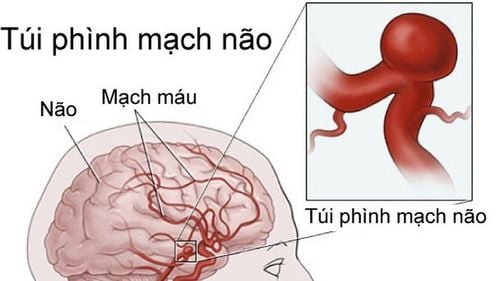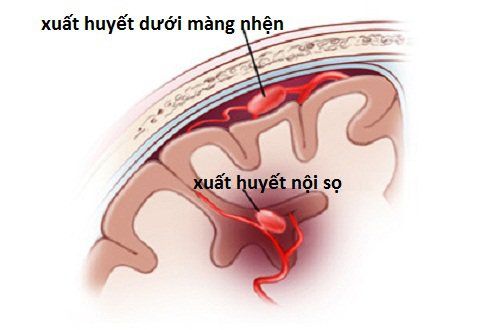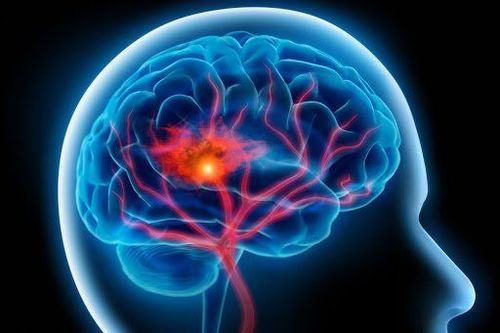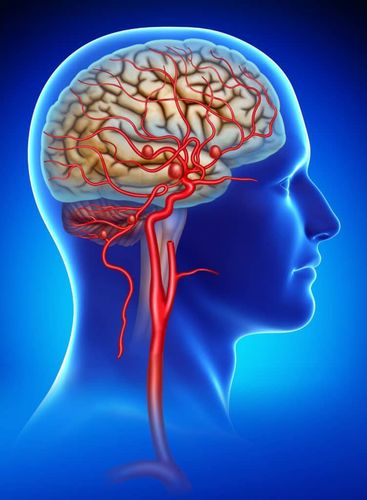This is an automatically translated article.
The microsurgical procedure for clamping an aneurysm involves several steps that must be performed one after another, the ultimate goal is to proactively control if the aneurysm has not ruptured or to correct the brain hemorrhage if the aneurysm has ruptured. Regardless of the setting, a good understanding of the following surgical procedures for cerebral aneurysm will reinforce this decision.
1. What is brain aneurysm clamp surgery?
Brain aneurysm clamp surgery is surgery to cut off blood flow to the brain aneurysm. This intervention is performed to prevent vascular rupture and intracranial hemorrhage. This is an open cranial surgery and is relatively complicated. In it, the surgeon exposes the aneurysm by cutting the skull and placing a metal clip through the base of the aneurysm so that blood cannot continue to enter the aneurysm. In recent years, titanium metal clamps are often used with more prominent inert advantages than other metal materials.
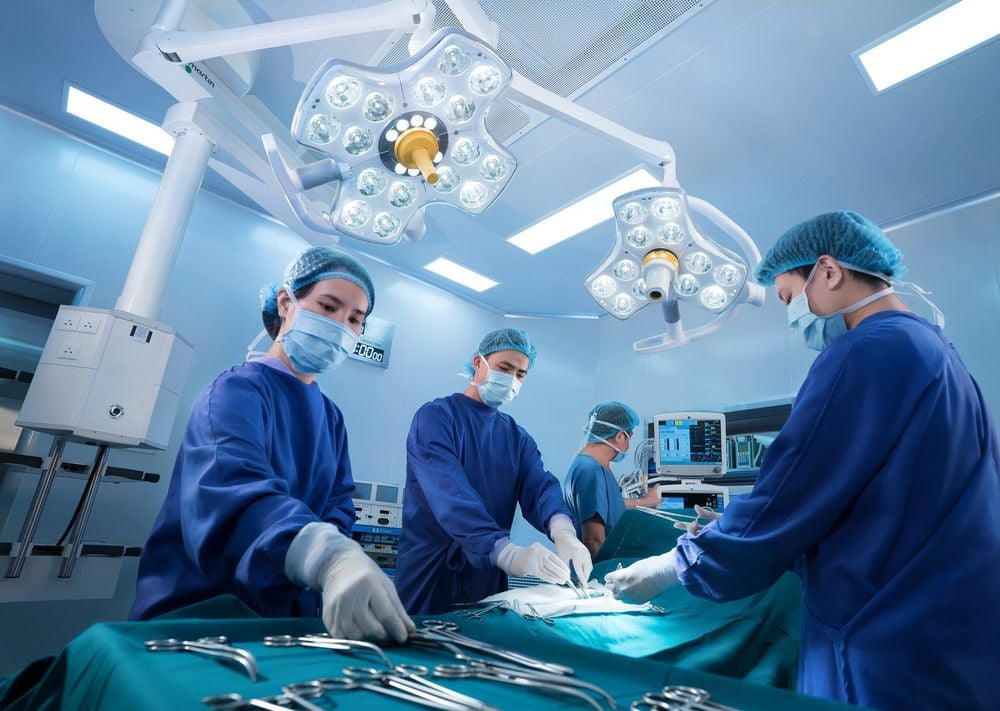
Phẫu thuật kẹp túi phình động mạch não tương đối phức tạp
2. What to prepare before surgery?
Preparation before surgery will be very different when a patient is brought to the emergency room with a ruptured brain aneurysm and an unruptured brain aneurysm.
For a ruptured and life-threatening brain aneurysm, the patient should be taken immediately to the operating room after the doctors have located the aneurysm and the temporary blood pressure has been determined. stability control. To lower blood pressure, doctors may use intravenous drugs, increase ventilation on a ventilator, or with sedatives. An invasive arterial pressure line may be inserted into an artery at your wrist to monitor blood pressure. At this time, the patient needs to have an absolute space to rest at the bed, limit stimulation so that blood pressure and other vital indicators are quickly stabilized.
In case the brain aneurysm does not rupture, the patient will be scheduled to perform preoperative tests, such as blood tests, electrocardiogram, chest X-ray ... a few days before surgery. In addition, the patient and relatives or representatives will be explained by the doctor about the benefits and possible risks during the intervention. If the patient agrees, the patient needs to fill out the form and sign the consent form. Then, the anesthesiologist will examine you and ask about your medical history such as drug allergies, anesthetic reactions, previous surgeries... to assess the patient's ability to tolerate this surgery. In addition, the doctor also needs to know the drugs that the patient is taking, including prescription and non-prescription, herbs... If you are taking non-steroidal anti-inflammatory drugs and aspirin, the patient needs to stop within one week before surgery.
Patient will be admitted to the hospital the morning before surgery. Do not eat or drink anything from midnight until the time of surgery. An intravenous line with a hypertonic solution is placed in a vein in the patient's arm. When everything is ready, an anesthesiologist will explain the effects of the anesthetic and will administer anesthesia.
3. How does microsurgical clamping of cerebral aneurysms take place?
The microsurgical procedure for clamping an aneurysm has six steps. All these steps will take place in 3 to 5 hours or maybe longer if the craniotomy step is complicated.
Step-by-step procedure in microsurgical clamping of cerebral aneurysm is presented as follows:
Step 1: Prepare patient
The patient will lie supine on the operating table and receive general anesthesia. When fully anaesthetized and ventilated via endotracheal intubation, the patient's head will be placed in a tripod skull immobilizer, which is attached to the table to keep the head in place throughout the surgery. The hair on the skull that needs intervention will be shaved off and the scalp will be cut, exposing the skull. A drainage tube may be placed in the lumbar spine to drain the cerebrospinal fluid, helping the brain to relax more during surgery. In addition, cranial pressure can also be reduced when the patient is infused with a hypertonic solution called mannitol. Step 2: Perform craniotomy
Depending on the location of the brain aneurysm, a flap of the skull at that location will be identified and prepared to be cut away. Once the scalp is prepared, the surgeon will make an incision in the skin to reveal the skull. The skin and muscles are lifted off the bone and folded. Next, small holes are made in the base of the skull using drill bits. Drilled holes allow opening the entrance of the skull with a special saw. The surgeon will cut away a bone window. The cut bone flap is lifted and removed to reveal the hard, protective covering of the brain, known as the dura mater. The dura mater will also be opened, exposing the brain parenchyma. Step 3: Access to the aneurysm
When the dura is opened, the brain parenchyma will be exposed. By working under a microscope, the surgeon will carefully locate the artery and trace it to the aneurysm in need of intervention. Before placing the clip, the surgeon will control the blood flow in and out of the aneurysm. Aneurysms should be handled with great care because they can cause rupture. If rupture occurs during surgery, a temporary clip may be placed over the proximal artery to stop the bleeding. Depending on the size and location of the aneurysm, blood flow control may sometimes require access to the carotid artery in the neck through a separate incision. Step 4: Clip the aneurysm
Normally the aneurysm is held tightly by the surrounding connective tissue. Therefore, it is necessary to dissect the aneurysm from other structures before being prepared for clamping. Small arterial branches also need to be noted so that they are not clamped simultaneously in the clip. The clip is unfolded and placed across the neck of the aneurysm. Once complete control is ensured, the two jaws of the clip securely close the aneurysm from the original artery. Multiple clips can be used with different aneurysms at the same time. The clips are made of titanium and will stay on the artery permanently. Step 5: Check the clip
After clamping, the surgeon will need to re-examine the clip to make sure the clip is not clamping by mistake, narrowing either the original artery or other arteries in the jaw of the clip. Even the brain aneurysm is pierced with a needle to ensure that blood no longer fills it. At the same time, the patient was also photographed cerebral artery system right in the operating room to confirm the blood flow through the original artery.
Step 6: Close the skull cap
The sclera will be closed with sutures. The bony flap was covered and secured to the skull by titanium plates with screws. The muscles and skin are also stitched together. Finally, a soft gauze dressing will be placed over the incision.
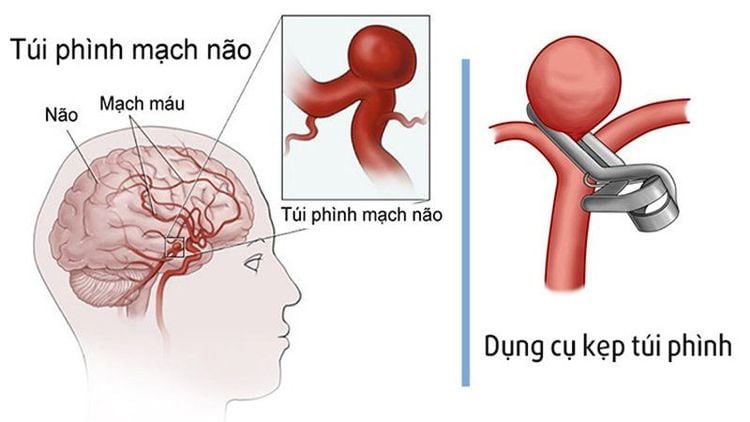
Quy trình vi phẫu thuật kẹp túi phình động mạch não gồm 6 bước
4. What care should be taken after clamping the brain aneurysm?
After the surgery is over, the patient will be taken to the recovery room to continue to monitor his vital signs until he wakes up
Next, the patient will be transferred to a psychiatric intensive care unit menstrual period to monitor during the hospital stay. Painkillers will be prescribed when needed. Some patients may experience nausea and headaches after surgery; However, these symptoms can be controlled with medication.
The patient is also encouraged to stay in bed or move around the room on his own as soon as possible. If everything is stable, after a few days the patient can be discharged.
For cases of ruptured aneurysms, the patient needs to stay in the ICU for 14 to 21 days and be monitored for signs of vasospasm. This is a physiological reflex of cerebral blood vessels when cerebral hemorrhage occurs and will result in secondary cerebral infarction. Arterial spasms can occur after 3 to 14 days. Signs of spasms include arm or leg weakness, confusion, drowsiness or irritability, and restlessness.
When returning home, the patient should be instructed on how to care for the incision and detect early signs of infection, and should rest often, avoid stress or over-exercise. If the patient has sequelae of brain damage, physical therapy or rehabilitation can be combined.
In summary, surgery to clamp brain aneurysm is a classic method to intervene to prevent or deal with the consequences of cases with aneurysms in the brain. Indications for intervention depend on the characteristics of the aneurysm, but the success of the surgery also depends on the compliance with the procedure, which requires meticulousness and accuracy in each step as above.
To register for examination and treatment at Vinmec International General Hospital, you can contact Vinmec Health System nationwide, or register online HERE
References: winchesterhospital.org, bafound .org, sciencedirect.com
SEE MORE
Learn the method of plugging brain aneurysms at Vinmec Stroke: Causes, signs, and ways to avoid Brain infarction treatment methods




